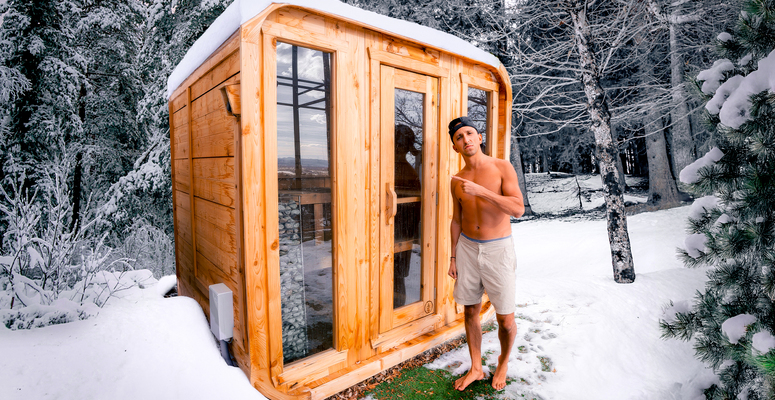Kyle is a dedicated and trusted researcher and curator of information/resources on living a healthy life.

Today, let's explore the fascinating world of wake-up lights, focusing on the Philips Smart Sleep and the Hatch Restore. We'll dive into their features, advantages, drawbacks, and alternative options to help you make the best choice for your morning routine.
What are wake-up lights?
Wake-up lights are innovative devices designed to mimic the natural sunrise using light and sound. They gently wake you up, making them ideal for people in areas with limited sunlight or those who struggle to rise in the morning. The goal? Not just to enhance your wake-up routine, but also to improve your overall sleep quality.
Philips Smart Sleep

Let's start with the Philips Smart Sleep. Priced at $219, this device offers customizable sunrise alarms that gradually increase the light intensity before your wake-up time.
It comes with a Sleep Mapper app to set multiple alarms, light colors and intensity, control sounds, and accessibility to the built-in radio.
Equipped with sensors, it assesses room temperature, humidity, light, and noise levels to track your sleep and uses your preset alarms to ‘track your sleep’.
Additionally, it has an orange clock with orange buttons that innovatively blend into the light and a strong level of brightness. A potential downside of the orange is, that the red light is optimal for winding down, and its programmed settings may not be able to go as red as some users may like.
Some of its additional features are:
- Basic speakers with average sound quality
- Ability to connect to the radio (No Spotify or Apple Music)
- Touchscreen device to manually adjust your settings.
- Ability to turn off the display completely.
- Four sun themes and 25 brightness settings.
- Ability to set multiple alarms
- Minimalist wind-down meditation features.
- 8 sound/music options
Hatch Restore

On the other hand, the Hatch Restore comes in at a more budget-friendly $129. It has a sleek design and intuitive interface and offers a wide array of light settings, meditation, breathwork, and sound options.
The Hatch Restore prioritizes simplicity and versatility, with a much cleaner aesthetic inside the interface of its Hatch sleep app.
It too provides a sunrise wake alarm, but instead includes a default sleep and wake routine on the app.
Some of its additional features are:
- 36 alarm tones/sounds
- 10 color schemes and 22 colors
- 50 meditations and 8 sleep stories
- Built-in speakers on the front and back (average sound quality)
- Users can have up to 10 steps in their nightly routine
- A blue digital clock on the front that can be dimmed/turned off.
Comparing The Two:
- Price and Value
Hatch Restore $129 ✅
Phillips Smart Sleep $219 ❌
When it comes to price, the Hatch Restore wins with its affordable $129 price tag compared to the Philips Smart Sleep's $219. Despite the price difference, both devices offer similar features, making the Hatch Restore a compelling option for budget-conscious consumers.
- Customization and Functionality
Hatch Restore ✅
Phillips Smart Sleep ❌
Both wake-up lights allow for customizing sunrise alarms, light color, and sound. However, the Hatch Restore shines with its extensive library of meditation, breathwork, soundscapes, and light settings, offering users a more immersive experience.
- Aesthetics and User Experience
Hatch Restore ✅
Phillips Smart Sleep ❌
In terms of aesthetics, the Hatch Restores clean and minimal design outshines the Philips Smart Sleep. It not only has a better user experience and cleaner interface on its app but also looks better on the nightstand, in my opinion.
An Easy Winner
Considering price, functionality, and aesthetics, the Hatch Restore emerges as the easy winner of the two. Its affordability, extensive features, and sleek design make it a top choice for those seeking a quality wake-up light without breaking the bank.
Alternatives and Future Considerations
While the Philips Smart Sleep and Hatch Restore are excellent options, you may also want to consider smart bulbs like Philips Hue for a customizable lighting experience. I personally love them as for around $50 per bulb you can program a gradual shift in red light as you wind down for bed or white as you wake up, not just on the nightstand but throughout your entire room.
Additionally, if you have trouble sleeping a wake-up light may be treating the symptom of your problems, not the root. It’s therefore important to invest in devices that track your sleep data to help you better understand how and when you’re sleeping and what changes you should make. Devices such as the Oura ring and Eight Sleep mattress topper are game-changers in the world of optimal sleep and a huge part of my daily routine.
For the complete video guide comparing the two devices, watch the video here.
Frequently Asked Questions (FAQ’s)
Q: Do wake-up lights work?
A: Yes, wake up lights simulate natural sunrise, helping you wake up more gently and feeling refreshed.
Q: Can wake-up lights improve sleep quality?
A: By promoting a more natural wake-up process, wake up lights may contribute to improved sleep quality over time.
Q: Are wake-up lights suitable for everyone?
A: While nothing is suitable for everyone wake-up lights are helpful for most individuals, especially those who struggle with traditional alarm clocks or live in regions with limited sunlight. As an alternative to traditional alarm clocks, they may not be suitable for heavy sleepers or those with specific sleep disorders.
Q: How long does it take to adjust to using a wake-up light?
A: Most people adapt to wake up lights within a week or two of consistent use, though individual experiences may vary.
Disclaimer: The content provided in this article is for informational purposes only and does not constitute medical advice. Consult with a qualified healthcare professional for personalized recommendations.
This post contains affiliate links. Read the Wellness Daddy affiliate policy here.


























![Read THIS Before You Build Your Chest Freezer Ice Bath [Cold Plunge]](https://cdn.prod.website-files.com/65a952b785432d0c394b31d0/65f376267b2922ee1d1bcf9c_DIY%20small.jpg)



